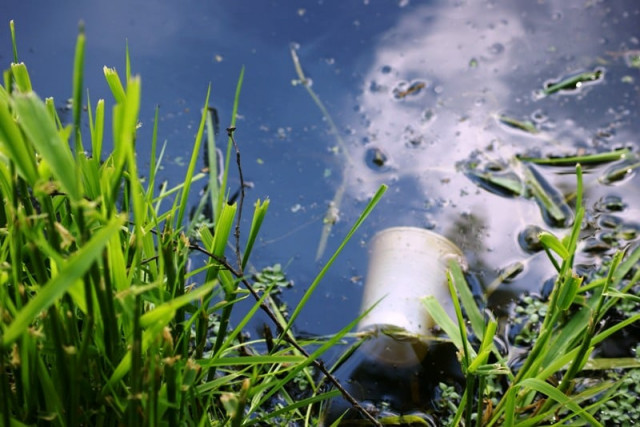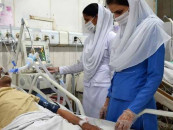Concentration of pharmaceuticals in wastewater ‘higher in city’
Researchers decry lack of wastewater treatment by pharma companies

PHOTO: FILE
The study was recently published research in the Journal of Ecotoxicology and Environmental Safety, conducted by a group of scientists from the University of Gujrat, Institute of Urban Environment, Chinese Academy of Sciences, Xiamen China and Department of Chemical Engineering, COMSATS Institute of Information Technology.
According to the researchers, this difference in concentrations exists due to the complete lack of wastewater treatment in pharmaceutical companies of Pakistan.
Such practice has not only witnessed a higher concentration of antibiotics and drugs being dumped into industrial wastewater, irrigated soil, plants, and groundwater, but it has also led to the detection of antibiotic resistance genes in the receiving environment of pharmaceutical wastewater.
At the same time, the pharmaceutical industrial sector of the country is growing considerably due to the increase in local population and export opportunities.
Titled ‘Ecological risk assessment of pharmaceuticals in the receiving environment of pharmaceutical wastewater in Pakistan', the researchers based their study on wastewater, sludge and solid waste samples collected from suitable locations near pharmaceutical industrial units around Dosaco Chowk and Sheikhupura Road, Lahore.
The soil samples were collected from nearby fields which were irrigated by pharmaceutical industrial wastewater.
The sampling area is comprised of about 10 pharmaceutical formulation units. These units formulate a variety of PCs in bulk quantities. Five sampling points were selected for the collection of wastewater, sludge, and solid waste samples, in the front and along each pharmaceutical unit.
The ecological risk assessment of 11 target PCs such as paracetamol, naproxen, diclofenac, ibuprofen, amlodipine, rosuvastatin, ofloxacin, ciprofloxacin, moxifloxacin, sparfloxacin and gemifloxacin) were also quantified.
The results showed that rosuvastatin and naproxen were the most abundant PCs in wastewater samples with the higher detection frequency (80–100%). Moreover, paracetamol, ibuprofen, amlodipine, and ofloxacin were detected with an average detection frequency (60%). Diclofenac, moxifloxacin, sparfloxacin, and ciprofloxacin were detected with a below average detection frequency (20–40%) whereas, gemifloxacin could not be detected at all.
The rapid growth in human population, urbanisation, and industrialisation has caused a proportional increase in the environmental contamination with several inorganic and organic pollutants.
Among these pollutants, pharmaceuticals are considered as emerging contaminants due to their frequent use, detection of different environmental matrices in high concentrations and the potential risk to the ecosystem. Pharmaceuticals are complex molecules, mostly organic in nature with different physicochemical and therapeutic properties.
These PCs ultimately become part of the environment via various point sources such as manufacturing facilities, hospitals, agricultural and land runoff, household use and improper disposal.
The research suggested that it is important to investigate the occurrence of PCs in crops which are irrigated by industrial wastewater. Moreover, it would be equally important to check the drug resistance among various pathogens against these PCs.
Published in The Express Tribune, December 3rd, 2017.



















COMMENTS
Comments are moderated and generally will be posted if they are on-topic and not abusive.
For more information, please see our Comments FAQ